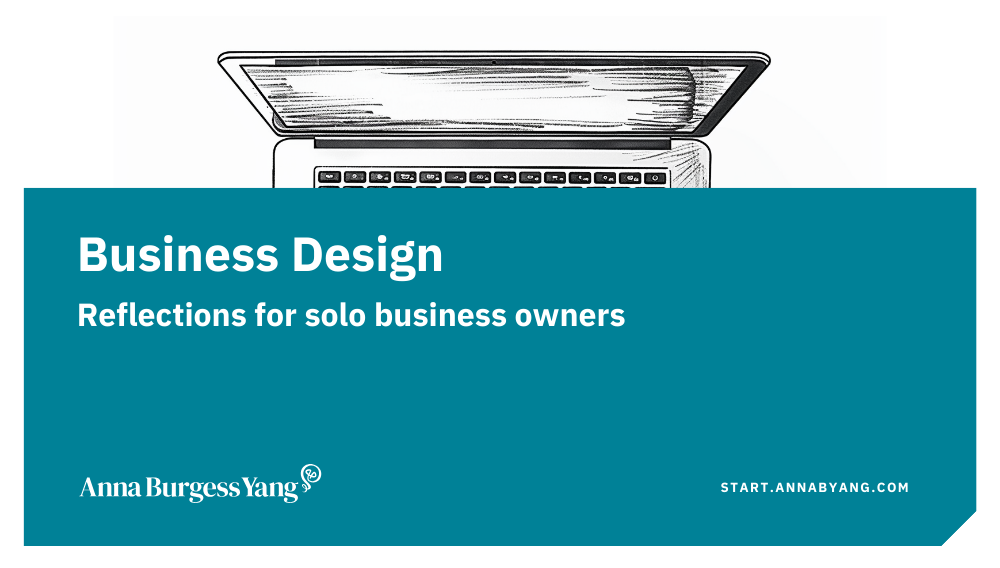5 Corporate Habits That Hold You Back as a Freelancer
Break free from the restrictions of corporate life.

Many freelancers recreate corporate life by accident. They carry over the habits that made them "good employees," like rigid schedules, constant availability, and nonstop people-pleasing. No wonder freelancing feels just as exhausting as the job they left.
Here's the problem: those habits were serving someone else's business. They helped you navigate office politics, earn positive performance reviews, and stay employed. But when you work for yourself, you make the rules.
I worked at corporate jobs for more than 15 years. As a full-time freelancer, I've learned to break free from some of the worst habits — and form new habits that make sense for me and my business.
Why the corporate-to-freelance transition matters
Most advice about going freelance focuses on specific tactics: how to invoice, how to find clients, and how to set your rates. (I should know — I write about those topics also!)
But sometimes, the harder work is unlearning the patterns you've internalized over the years. It's understandable. People get to Day 1 of working on their own, with complete freedom, and don't know where to start. So they lean into what they know, which are corporate habits.
But freelancing rewards the opposite behaviors of corporate life: autonomy, boundaries, and self-direction. The transition is an identity shift. You're no longer someone who works for a business. You're someone who runs one.
If you don't figure out how to form business habits that work best for you, you're going to fall short of your full potential as a freelancer.

The 5 corporate habits you need to break
Recognizing corporate habits is the first step. Most freelancers don't realize they're doing them, because the habits are so ingrained they feel like "how you're supposed to work." But that corporate environment no longer exists, and these habits are now working against you.
Here are a few habits you need to break.
1. Chaining yourself to 9-5 hours
The corporate world trained you to work during set hours, regardless of whether you were actually productive. Whether you worked in an office or remotely, you probably followed a typical 9-5 schedule. I worked for companies that had really flexible work environments, but employees still tended to operate in core hours.
I firmly believe that everyone has a natural body rhythm. If you follow rigid hours as a freelancer, you might be ignoring your peak productivity times. Maybe you do your best thinking at 6 a.m. or hit your creative stride at 9 p.m. You should lean into that as a freelancer.
I do my best work early in the morning, and I'm usually done by 3 p.m. (because that's when my kids get done with school). My email signature says:
"Because I work flexibly, my working hours may not be the same as yours. Please only respond during your working hours and I'll do the same."
This sets the tone so clients don't expect responses from me during the typical 9-5 working hours.
2. Wearing "busy" as a badge of honor
Corporate culture rewards busyness. Quick email responses. Back-to-back meetings. Always being available. Some people learn that looking busy is almost as important as being productive.
As a freelancer, busyness destroys your most valuable asset: focused time. Research shows it takes about 23 minutes to regain focus after you're distracted. If you're constantly bouncing between email, Slack, and client work all day, you're losing a lot of time.
3. Saying yes to everything
In corporate, saying yes is practically a requirement. Good employees take on extra projects and don't push back on unreasonable requests. They know that a "no" was career-limiting.
As a freelancer, you're being paid for the work in the scope of your project. If you say "yes" to work outside of scope, you're lowing the effective amount that you're paid for the project because you're putting in more work. You may even end up resenting clients and running yourself into the ground.
When requests fall outside that scope, you should say:
"That sounds like a great idea! It's outside our current agreement, but I'm happy to put together an estimate for the additional work."
4. Waiting to be recognized
In corporate jobs, you're promoted based on someone else's assessment. Some people learn to advocate for themselves, but most of the time, you wait for someone to notice your work.
As a freelancer, if you don't articulate your value, no one will do it for you. You have to be crystal clear about the work you do for clients, and why you're worth the rates you're charging.
5. Waiting too long to build systems
Corporate jobs have infrastructure, like onboarding documents, approval workflows, and IT support. More than likely, you didn't build any of that — you just used the systems already in place.
As a freelancer, you start with a blank slate. No one hands you a process for managing your clients or organizing your files.
Many freelancers wing it at first, which works until they're completely overwhelmed by your lack of systems. Then, as they try to grow, things get chaotic, and they spend a lot of time fighting a bunch of disconnected tools and broken workflows.
For example, I use Zapier to create client folders automatically when a new contract is signed. Automating that one task saves me time and makes sure my client folders stay organized.
Common mistakes when going from corporate to freelance
- Underpricing your services because you don't recognize your market value
- Skipping contracts because "we have a good relationship"
- Treating every client request as urgent when most things can wait
- Never taking time off because there's no PTO policy forcing you to
- Doing everything manually instead of building systems
Break the corporate habits checklist ✅
- Identify your peak productivity hours and protect them for deep work
- Turn off Slack and email notifications during your deep work time
- Add response-time expectations to your email signature
- Create a contract template that clearly identifies the scope of work
- Build a standard folder structure for new clients
- Set up one automation for a task you repeat every week
- Build a freelance business that actually fits your life
Build a freelance business that actually fits your life
You left corporate for a reason. Maybe it was the rigid hours, the politics, the ceiling on your earning potential, or simply the desire to control your own time.
Whatever drove you out, do not recreate the same type of environment as a freelancer. The corporate habits that made you a good employee don't work as well for a solo business.
Make it your priority to design your business around how you actually work best. Protect your time. Set boundaries. Build systems. Those are all things you need to do to create something that truly works for you.
Want to build a life-first business?
These reflections will help you determine your priorities.
FAQs
How long does it take to break corporate habits?
Most freelancers pick up on the tactical pieces — invoicing, contracts, finding clients — within a few weeks. The mindset shifts take longer. It might be anywhere from three to six months before you're comfortable controlling your work schedule and taking charge in your business.
What if my clients expect me to be available 9-5?
You need to guide your clients to care about results, not hours. Set expectations during a sales call or onboarding. Explain your working hours and response times upfront. The clients who need someone on-call from 9-5 probably aren't the right fit anyway.
How do I say no without losing the client?
Be direct but helpful. Explain why you can't take something on and offer an alternative, such as a future timeline, an increased scope, or a referral to someone who can help.
What's the first system I should build as a new freelancer?
A client folder structure in your Google Drive is an easy way to stay organized. A contract template protects you and your time. These two things prevent the most problems in the early days of freelancing.







